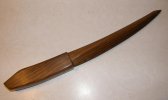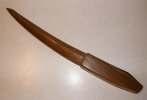Hi, I am looking at this kukri from Atlanta Cutlery, it is from the cashe bout by them from Nepal. I am not familiar with that company. Are they reliable, when kukri is advertised as genuine from that sale is it. I just wonder because they also make replicas thanks Her is the catalog picture





